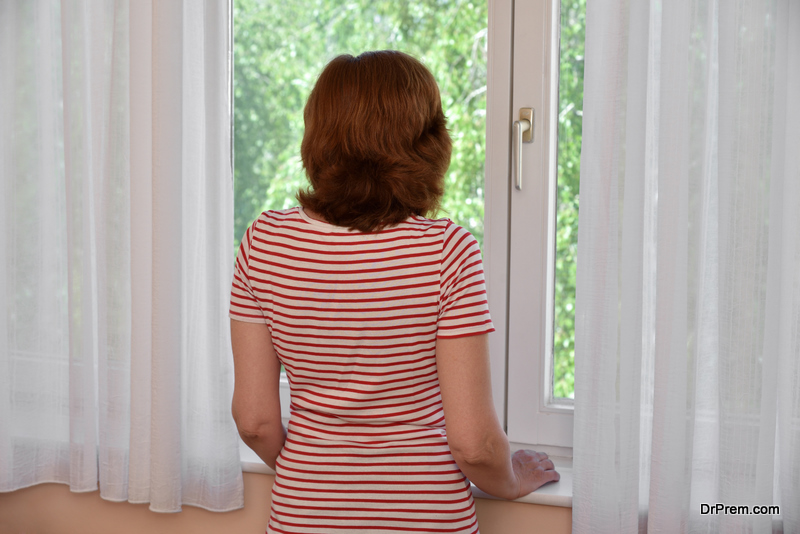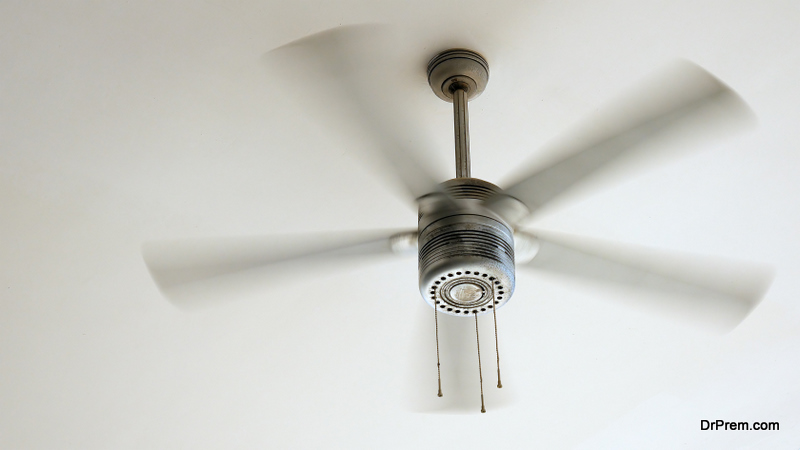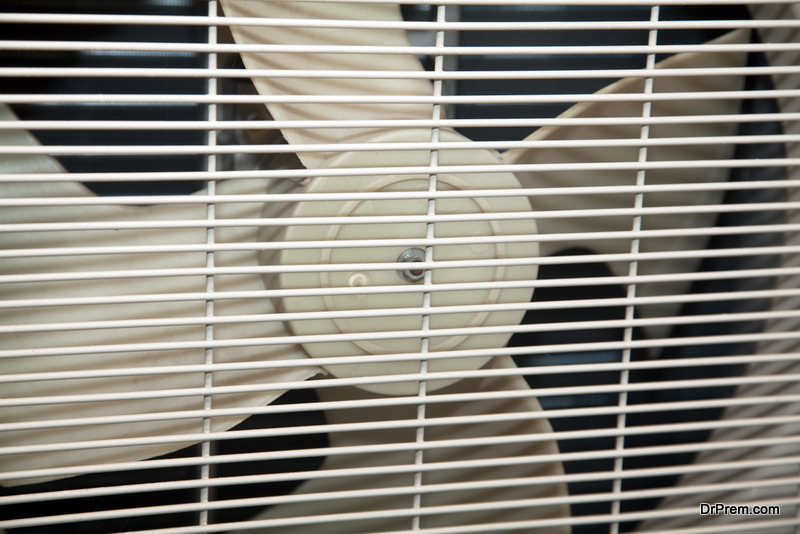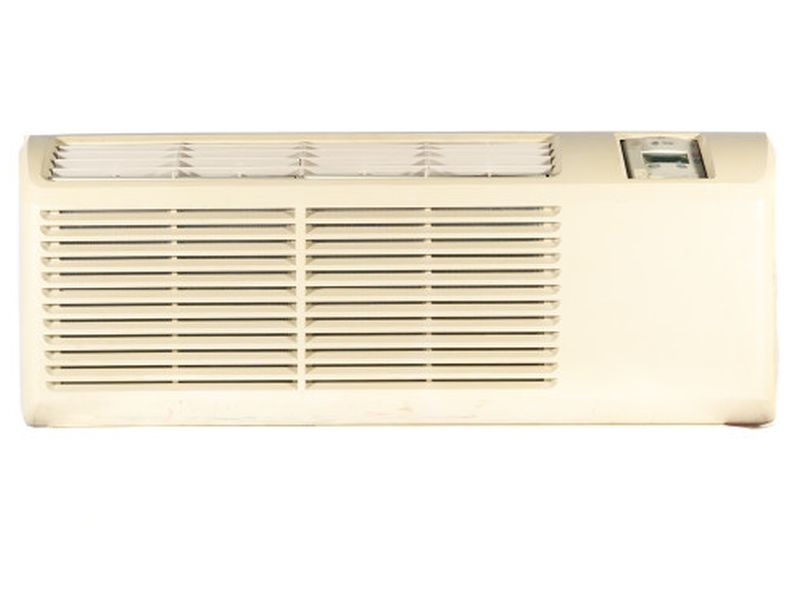Ensuring your home is sufficiently insulated is critical if you want to keep the heat outside and the fresh cool air inside. Check your home, walls, roof, windows, and others for any leaks or cracks where cool air could escape and warm air may creep in.
Air circulation is necessary when you need to keep a room cool, such as in rooms designed for sleeping. A properly ventilated space helps make breathing easier while ensuring temperatures stay comfortable.
Reduce Direct Sunlight
The heat from direct sunlight will increase the level of warmth in your space, turning a cool room into anything but. To remedy this, consider installing blinds, curtains, or reflective window panels to reduce sunlight and keep the room from warming up.
Take extra care with south-facing rooms, as they often receive more direct light. Closing your curtains or blinds before leaving for the day helps reduce the amount of light, but you can also install sun-blocking curtains or blinds.
1. Use Your Windows Strategically
 During the peak hours of the day (around 9 am to 3 pm), close your windows to keep the hot air outside and any cool air in. Once the temperature starts dropping in the evening, open the windows to let cooler air in and let warmer air escape.
During the peak hours of the day (around 9 am to 3 pm), close your windows to keep the hot air outside and any cool air in. Once the temperature starts dropping in the evening, open the windows to let cooler air in and let warmer air escape.
2. Limit The Amount Of Heat Being Generated
During the summer, there are a few ways that you may generate additional heat without even realizing it. To wit:
3. Clothes Dryer
 Not everyone thinks of a clothes dryer as a source of heat, but it’s a heat multiplier that emanates warmth. Instead, consider hanging your clothes outside on a line. You may also cut your electric bill in doing this.
Not everyone thinks of a clothes dryer as a source of heat, but it’s a heat multiplier that emanates warmth. Instead, consider hanging your clothes outside on a line. You may also cut your electric bill in doing this.
4. Oven
Any time you turn on an oven (including microwaves), you’re adding more heat into a space. Turn the heat off and try no-cook recipes such as salad to keep temperatures from rising.
Be Smart With Your Fan
Using a fan can help you keep a room feeling cool without increasing the electricity bill as much as running the a/c constantly.
1. Set Your Ceiling Fan To Rotate Counter-Clockwise
 A ceiling fan will rotate the air for better circulation. By reversing the direction of the blades, you will push warmth to the ceiling or floor instead of on you.
A ceiling fan will rotate the air for better circulation. By reversing the direction of the blades, you will push warmth to the ceiling or floor instead of on you.
2. Install A Whole-House Fan
Usually installed in the attic, a whole-house fan generally runs at night during cooler temperatures to replace the interior’s warmer air with colder air from the outside.
Whole-house fans cool space in less than an hour, using 85-90% less energy than a central air conditioning system. Depending on where you live, you could save yourself some money by installing this fan type.
3. Point Your Box Fan To The Window
 Push hot air out of a warm space by pointing a fan to a window. This will remove warm air from the area, allowing cool air to come in. Opening another window somewhere else in the room will create a cross-breeze for extra comfort.
Push hot air out of a warm space by pointing a fan to a window. This will remove warm air from the area, allowing cool air to come in. Opening another window somewhere else in the room will create a cross-breeze for extra comfort.
Opening doors inside will also keep the airflow moving consistently, removing any warm stale air and bringing in fresher cooler air to circulate through the house. This is especially effective at night when heat rises.
Landscaping
Everyone’s climate is different, but some cooling tips as these apply to most locations during the warmer days:
- Plant tall trees – Wide trees planted on the south-facing side of your home can provide your roof with shade.
- Put in smaller trees or bushes – These will help shade your walls from the sun.
- Low-lying shrubbery – Planted anywhere near the base of the foundation, low lying shrubbery will keep the surrounding ground cool. Make sure there is an empty row of space between your home and the bushes to allow for airflow.
Air Conditioning
 Sometimes, the weather can be way too warm even for fans to work efficiently. If the methods listed above don’t work, or you need extra relief from the heat, it’s time to install air conditioning. There are plenty of different options, units, and prices to choose from.
Sometimes, the weather can be way too warm even for fans to work efficiently. If the methods listed above don’t work, or you need extra relief from the heat, it’s time to install air conditioning. There are plenty of different options, units, and prices to choose from.
Central Cooling
Just like its name suggests, central cooling is a system that cools the air at a central location and then sends the air into different parts of your home via fans and ductwork. A central cooling system consists of a condenser, compressor, and evaporator and is broken down into split systems and package units.
Central cooling can be hugely beneficial for large families looking to cool an entire home down quickly.
Compact Air Conditioner
A portable air conditioner unit is perfect for those who don’t want a wall-mounted system.
Unlike central cooling, which can cool the entire house, apartment, office space, and others, a portable air conditioner is more energy-efficient. Moreover, its smaller size is great for cooling down specific areas of your home.
Best of all, a compact air conditioner can be easily stored away when not in use, so you don’t have to worry about a compact air conditioner taking up space.
Packaged Terminal Air Conditioner (PTAC)
 A PTAC air conditioner is used for heating or cooling a single space using only electricity.These packaged terminal air conditioning units are usually installed in window walls of hotels, motels, hospitals, apartment buildings, and more. Buying an appropriately size PTAC unit depends on the amount of BTUs (British Thermal Units) required.
A PTAC air conditioner is used for heating or cooling a single space using only electricity.These packaged terminal air conditioning units are usually installed in window walls of hotels, motels, hospitals, apartment buildings, and more. Buying an appropriately size PTAC unit depends on the amount of BTUs (British Thermal Units) required.
Benefits of a PTAC include increased efficiency, the ability to cool/heat multiple areas at once, and ease of installation.
What Air Conditioner Size Is Best for You?
When purchasing an air conditioner, it’s important to note the BTUs you need, which are the units of power required to cool down a space. To effectively deal with a room’s humidity, it’s important to buy an air conditioner that matches your room’s size, as buying an AC unit with more BTUs than needed isn’t recommended.
A room’s BTU can be found by determining the cubic volume of the space, height, length, and width and then multiplying the measurements by four.
Final Thoughts
Keeping a cool room depends on how much cooler you want the room to be and whether or not you’re looking to invest in an air conditioning unit. You’ll also have to take into account other factors, such as how much direct sunlight a room receives and how much heat is being generated in the home.
Some rooms may simply benefit from closing the blinds or adding a compact air conditioner. However, if a home’s most used rooms are generally south-facing, a central cooling system may be necessary.
Article Submitted By Community Writer




